Borlaug Summit on Wheat for Food Security: remembering Norman Borlaug
One of the most important aspects of planning the Borlaug Summit on Wheat for Food Security is remembering Norman Borlaug. We’ve received photos and stories from individuals and institutions as they register for the event. Some people only met Dr. Borlaug once while others worked with him for years, but they all share memories of his kindness and impact. You can read and see all of the submissions here; a few of our favorites to date are found below (some submissions are edited for clarity):
“I will help you”
“Dr. Borlaug’s visit to China in 1974 with U.S. delegates started the collaboration between China and CIMMYT … I met him in November of 1990 when I started as a postdoctoral fellow in the CIMMYT Global Wheat Program. We lived in the same block of the visiting scientist building and met very often in the cafeteria in the evening. I traveled with Borlaug a few times and facilitated his visits to China many times.
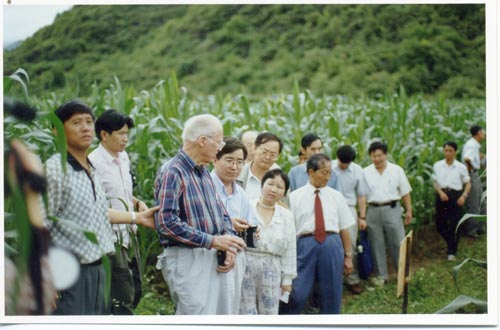
What I learned from him is to respect people and work hard. Never, ever, hurt other people’s dignity or pride, and never be arrogant. Always say, ‘I will help you!’ … As said by , CIMMYT Director General Dr. Tom Lumpkin, the best way to commemorate Borlaug is to work hard and do your best job.”– Dr. Zhonghu He
Respected by everyone
“I met Norman Borlaug during a 2008 field day. I remember that he was happy to meet someone from Morocco and told me that he had visited Morocco many years ago and kept a good souvenir from his visit.
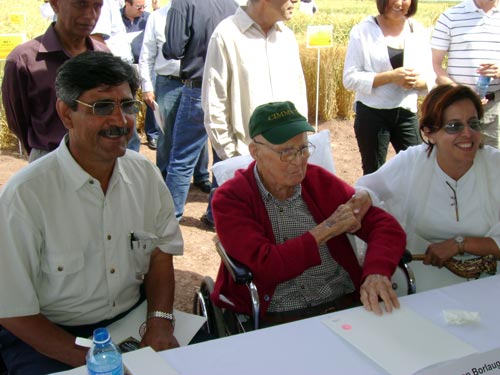
While attending the Borlaug workshops and listening to his success stories from the scientific and farmer communities, I understood that he was a great man loved and respected by everyone throughout the world and that he left a very good impression on all the people he met and countries he visited. He is the real father of the Green Revolution. I would have liked to have met him earlier. I would have, for sure, learned a lot from him.” – Dr. Rhrib Keltoum
Memories Unforgotten
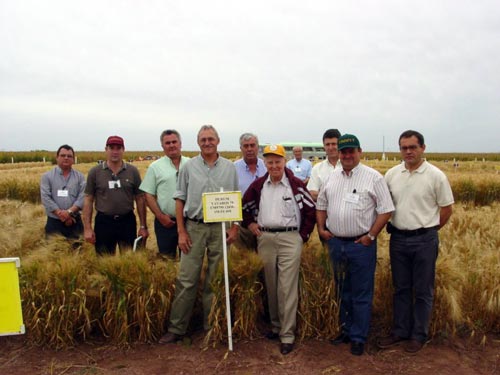
“In 2003, one group of farmers from the Cooperatives of Andalusia (southern Spain), owners of the seed company Agrovegetal, visited El Batán and Ciudad Obregón to get to know CIMMYT. We met Dr. Borlaug in Texcoco, and he agreed to travel with us to Sonora to explain the wheat breeding program to us.
I will never forget those days, his personality and his enthusiastic way of teaching. We took a picture with durum wheat YAVAROS 79, the most widely grown variety in Spain, even 25 years after its release.” –Dr. Ignacio Solis, Director, Agrovegetal
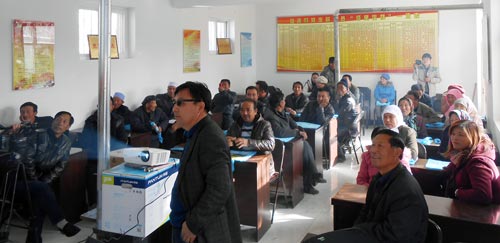
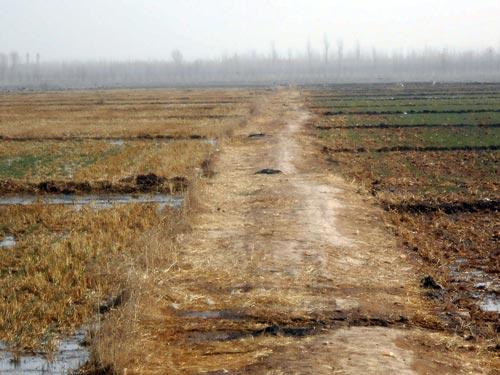
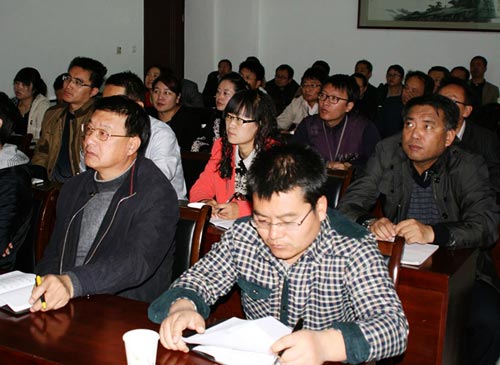
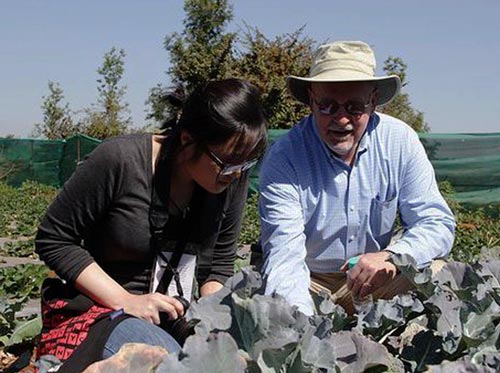
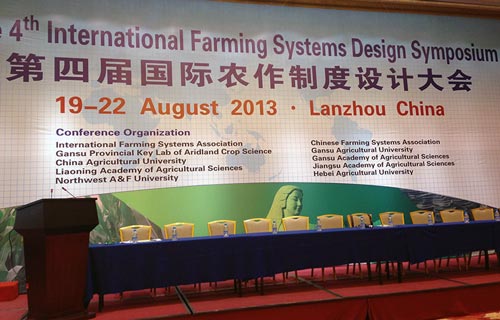 Farming systems all over the world face complex problems in terms of production, such as natural resource depletion, climate change, increasing food demand, and volatile prices. Farmers have to adapt to continuously changing conditions to produce food. ‘Farming systems design’ is an approach that aims at modifying designs of farming systems to sustainably increase the overall productivity and profitability of the systems—and, hopefully, the welfare of individual farming families—while considering interactions in the system. Interactions are important features of farm system structure and operation. They may occur between the various components, including crop-crop, crop-livestock, and farm-household as well as on-farm-off-farm activities as they compete for the same resources.
Farming systems all over the world face complex problems in terms of production, such as natural resource depletion, climate change, increasing food demand, and volatile prices. Farmers have to adapt to continuously changing conditions to produce food. ‘Farming systems design’ is an approach that aims at modifying designs of farming systems to sustainably increase the overall productivity and profitability of the systems—and, hopefully, the welfare of individual farming families—while considering interactions in the system. Interactions are important features of farm system structure and operation. They may occur between the various components, including crop-crop, crop-livestock, and farm-household as well as on-farm-off-farm activities as they compete for the same resources.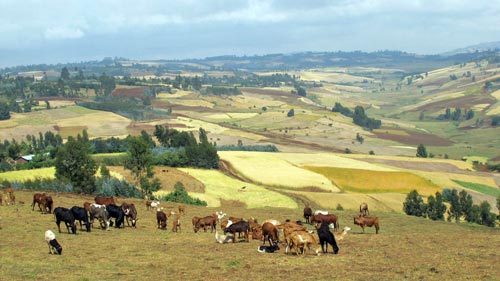 For Peter Carberry, chair of the Program Committee and deputy director at the Commonwealth Scientific and Industrial Research Organization (
For Peter Carberry, chair of the Program Committee and deputy director at the Commonwealth Scientific and Industrial Research Organization (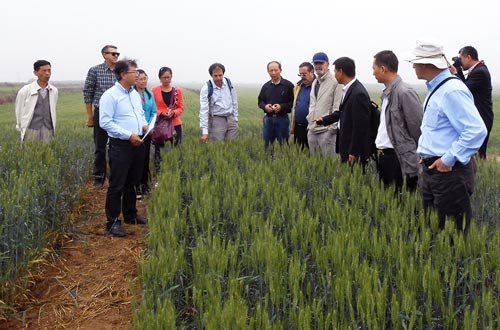 The past few weeks have been busy and interesting in China: preparing for the International Conservation Agriculture Forum in Yinchuan and work travels to Beijing, Yangling (Shaanxi province), and Xuchang (Henan province) are a sure way to keep oneself occupied.
The past few weeks have been busy and interesting in China: preparing for the International Conservation Agriculture Forum in Yinchuan and work travels to Beijing, Yangling (Shaanxi province), and Xuchang (Henan province) are a sure way to keep oneself occupied.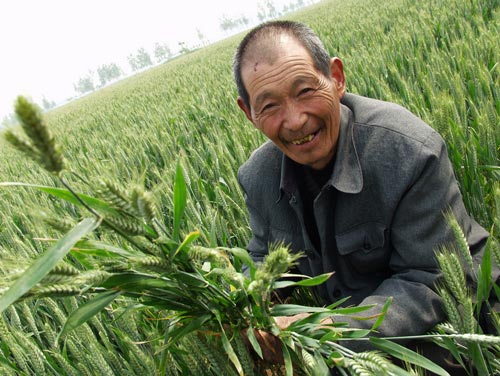 Breeding of durable resistance to stripe rust —the greatest biotic threat to wheat production in the largest wheat producer and consumer in the world, China— was the major theme of a workshop jointly organized by the CIMMYT-Sichuan office and the Sichuan Academy of Agricultural Sciences (SAAS) at the SAAS Plant Breeding Institute in Chengdu, Sichuan province, China, on 18 May 2013. The workshop aimed to promote the adoption of second-generation parents and slow-rusting breeding strategies in spring wheat-producing areas of China and to facilitate collaborative breeding strategies between SAAS and its sister organizations in neighboring provinces. The workshop consisted of a seminar and a discussion session on germplasm and breeding strategies led by Gary Rosewarne (CIMMYT Global Wheat Program senior scientist) and Bob McIntosh (Emeritus Professor at the
Breeding of durable resistance to stripe rust —the greatest biotic threat to wheat production in the largest wheat producer and consumer in the world, China— was the major theme of a workshop jointly organized by the CIMMYT-Sichuan office and the Sichuan Academy of Agricultural Sciences (SAAS) at the SAAS Plant Breeding Institute in Chengdu, Sichuan province, China, on 18 May 2013. The workshop aimed to promote the adoption of second-generation parents and slow-rusting breeding strategies in spring wheat-producing areas of China and to facilitate collaborative breeding strategies between SAAS and its sister organizations in neighboring provinces. The workshop consisted of a seminar and a discussion session on germplasm and breeding strategies led by Gary Rosewarne (CIMMYT Global Wheat Program senior scientist) and Bob McIntosh (Emeritus Professor at the 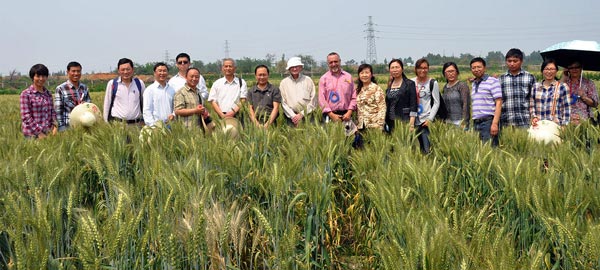
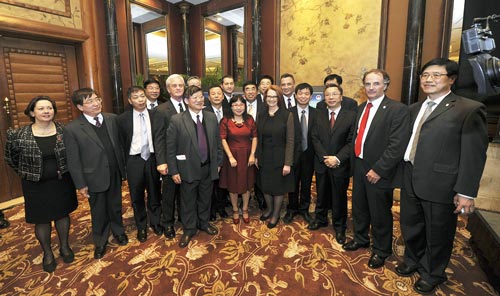 The Chinese Academy of Agricultural Sciences (CAAS)
The Chinese Academy of Agricultural Sciences (CAAS)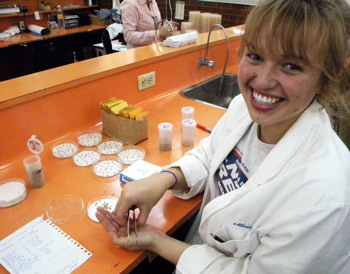 Many scientists begin exploring at a young age; they try to figure out the things they don’t know, ask questions of others, and see how this information might be useful to them in creating new knowledge. The very lucky ones might have a mentor, or at the very least, a place where they are encouraged to cultivate their curiosity and use what they find out to help others.
Many scientists begin exploring at a young age; they try to figure out the things they don’t know, ask questions of others, and see how this information might be useful to them in creating new knowledge. The very lucky ones might have a mentor, or at the very least, a place where they are encouraged to cultivate their curiosity and use what they find out to help others.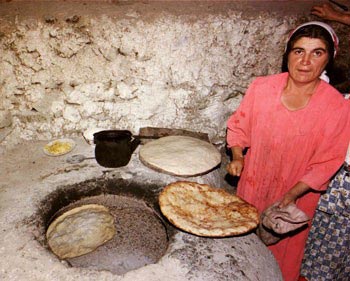 A February 2013 report from
A February 2013 report from